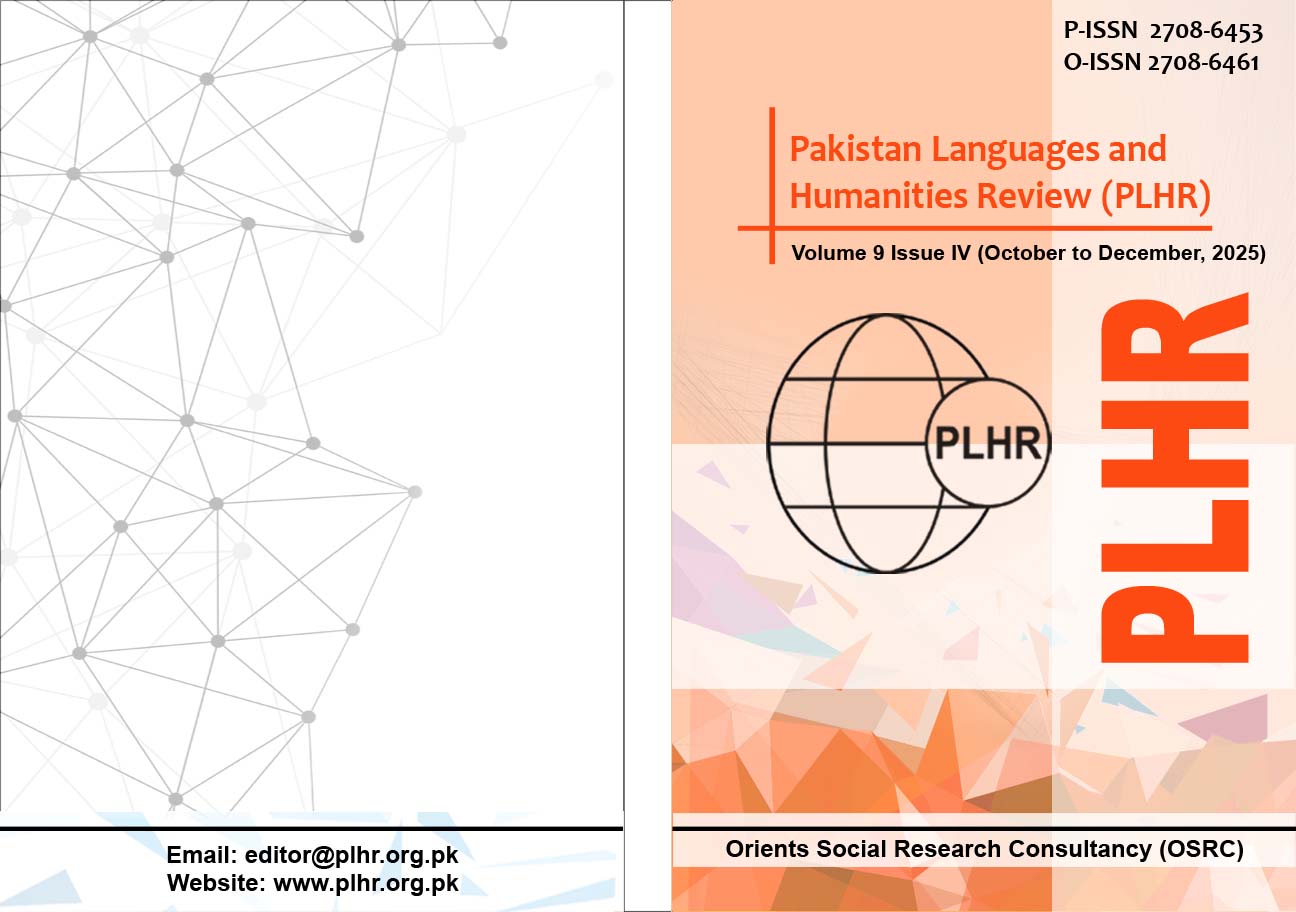Investigating the Variation of Formal and Informal Vocabulary in Pakistani English on Twitter
DOI:
https://doi.org/10.47205/plhr.2025(9-IV)17Keywords:
Linguistic Variation, Vocabulary, Dimensional Analysis, Twitter Corpus, Register TheoryAbstract
This study investigates the vocabulary of the English language and its variation of formality and informality within a specified sample of tweets, focusing on the social modulation of linguistic forms in digital communication. Using a mixed-method approach, the study analyzes Twitter data through MAT tagger and corpus analysis tools. A pilot test was conducted to validate encoding using UTF-16 in Python due to Urdu script interference. Quantitative analysis employed a differential scale (20*–20) on both axes, while qualitative interpretation was based on Halliday’s (1960) Register Theory. Findings reveal that formality and informality vary situationally, shaped by social and linguistic constraints. The quantitative outcomes show distinguishable lexical shifts between explicit and situationally dependent expressions, indicating social media’s influence on language construction. The results also confirm that bilingual interference moderates linguistic variability within digital discourse. Future research should expand corpus diversity across platforms and demographics to refine linguistic dimensionality.
Downloads
Published
Details
-
Abstract Views: 99
PDF Downloads: 45
How to Cite
Issue
Section
License
Copyright (c) 2025 Pakistan Languages and Humanities Review

This work is licensed under a Creative Commons Attribution-NonCommercial 4.0 International License.

ORIENTS SOCIAL RESEARCH CONSULTANCY (OSRC) & PAKISTAN LANGUAGES AND HUMANITIES REVIEW (PLHR) adheres to Creative Commons Attribution-Non Commercial 4.0 International License. The authors submitting and publishing in PLHR agree to the copyright policy under creative common license 4.0 (Attribution-Non Commercial 4.0 International license). Under this license, the authors published in PLHR retain the copyright including publishing rights of their scholarly work and agree to let others remix, tweak, and build upon their work non-commercially. All other authors using the content of PLHR are required to cite author(s) and publisher in their work. Therefore, ORIENTS SOCIAL RESEARCH CONSULTANCY (OSRC) & PAKISTAN LANGUAGES AND HUMANITIES REVIEW (PLHR) follow an Open Access Policy for copyright and licensing.







